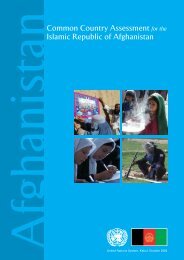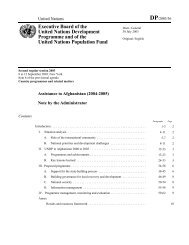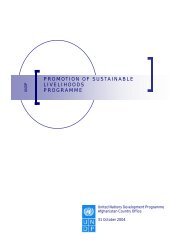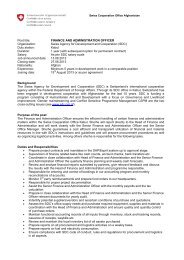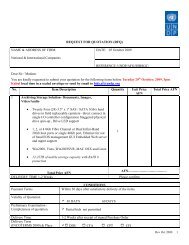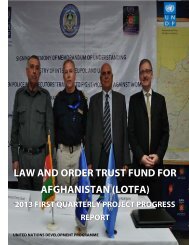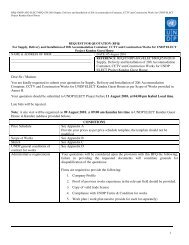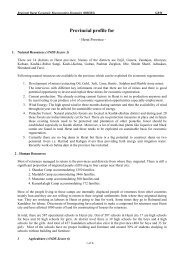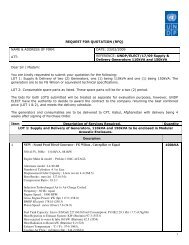Progress Report Quarter 2 2011 - UNDP Afghanistan
Progress Report Quarter 2 2011 - UNDP Afghanistan
Progress Report Quarter 2 2011 - UNDP Afghanistan
Create successful ePaper yourself
Turn your PDF publications into a flip-book with our unique Google optimized e-Paper software.
National Institution Building Project : Project ID 00073380 | 30/42<br />
focusing its activities on overall organizational and systemic change management to reduce<br />
risks arising out of change of individuals and also by working with various hierarchical levels<br />
within the ministry to increase the spread and to diversify the risk.<br />
Issues<br />
Expansion of project activities at sub-national level<br />
For NIBP‟s institution building CD work to truly make a difference, it needs to have a wider<br />
presence at the sub national level. Accordingly, appropriate attention is being given to build<br />
up synergies between <strong>UNDP</strong> projects already working in the provinces and also care is being<br />
taken to avoid creation of redundancies.<br />
Integrating NIBP office with government partner<br />
Though NIBP is a direct implementation modality (DIM) project, a conscious effort was made<br />
to put the government partner, i.e., GDPDM, IARCSC in lead and to integrate the project<br />
office within GDPDM. This is to ensure that the capacity development efforts of <strong>UNDP</strong> are<br />
Afghan led and in alignment with the actual requirements.<br />
V. Lessons Learnt<br />
An important lesson of project implementation so far has been related to the requirement of<br />
its positioning as a CD project as against other projects which depend on Technical<br />
Assistance under the garb of CD. The distinguishing features of NIBP in terms of its design<br />
and approach needs to be highlighted and disseminated. This was achieved effectively<br />
during the reporting period through CDP presentation workshops by partner ministries.<br />
The strength of NIBP is its model of large outreach wherein it operates through teams of<br />
advisors placed in different ministries/agencies. However, the common approach of the<br />
project in different partner ministries / agencies meets with varying degree of success. The<br />
expectations of capacity development therefore need to be realistic.<br />
Lastly, there is a need to develop mechanisms and indicators for measuring results and<br />
achievements of CD efforts at all levels.<br />
VI.<br />
Future Plan<br />
“Institution Building” at central level through “advising” and “coaching and mentoring” is a<br />
niche area of NIBP and shall continue to be the priority in <strong>2011</strong>. However, for good reasons,<br />
the priority is shifting to capacity development at sub-national level. NIBP expanded its<br />
operations to western region during the reporting and will further expand its operation to<br />
northern region and central highlands in coming quarter.<br />
The activities of <strong>2011</strong> will include continued services in ministries / agencies with renewed<br />
focus on policy advice along with coaching. Accordingly, Policy Analysis and Development<br />
component of the project shall be strengthened.<br />
Finally, in line with the proposed “transition” to development being increasingly “on-budget”<br />
and government led, plans will be drawn and consultative process will commence to move<br />
the project implementation from “DIM” to “NIM” modality.<br />
<strong>Quarter</strong>ly Project <strong>Progress</strong> <strong>Report</strong> | April to June <strong>2011</strong>



